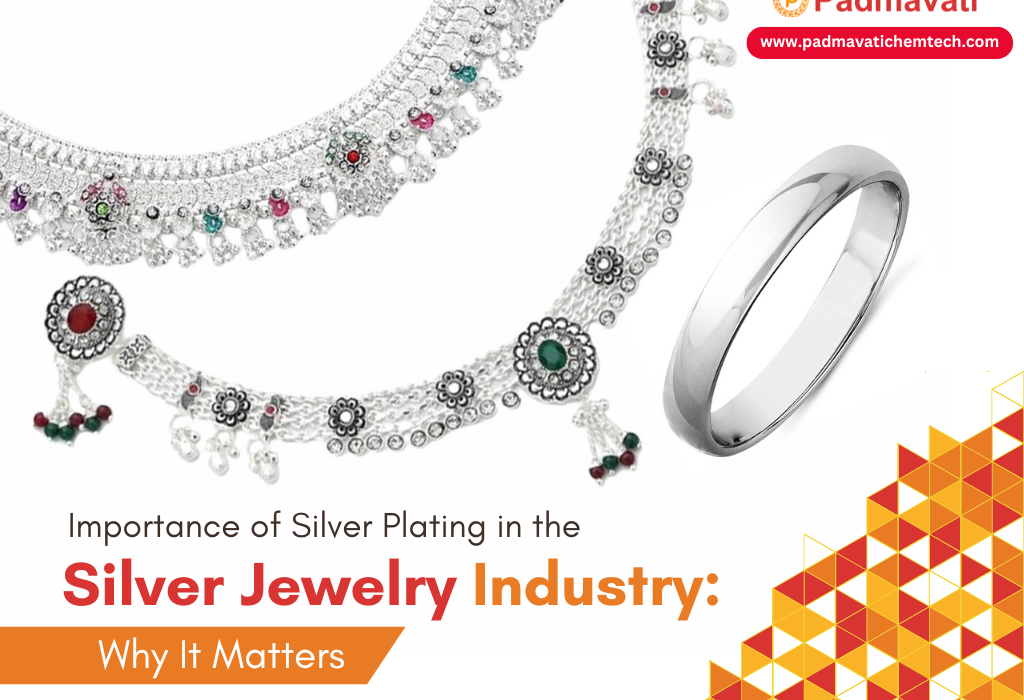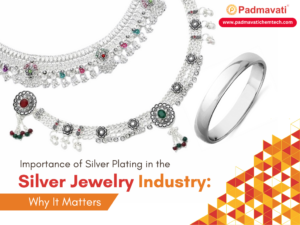Importance of Silver Plating in the Silver Jewelry Industry: Why It Matters
Silver jewelry has long been celebrated for its elegance, versatility, and timeless appeal. Whether it’s rings, necklaces, bracelets, or earrings, silver pieces are a staple in many jewelry collections. However, in the competitive jewelry industry, it’s not just about the beauty of the design but also the durability and maintenance of the product. One technique that has gained significant importance in the silver jewelry industry is silver plating.
Silver plating involves applying a thin layer of silver onto another metal, typically copper or brass, to enhance its appearance and overall quality. While it may sound like a simple step, silver plating plays a crucial role in improving the aesthetic and functional qualities of silver jewelry. In this blog, we’ll explore why silver plating is a vital process for the silver jewelry industry and how it benefits both manufacturers and consumers.
- Improved Durability and Resistance to Tarnishing
Silver, despite its beauty, is prone to tarnishing due to its reaction with air, moisture, and sulfur. This tarnishing leads to a dull, unattractive appearance that can diminish the jewelry’s charm. Pure silver, or fine silver, has a relatively soft structure, which also makes it susceptible to scratches and dents.
Silver plating provides an effective solution to this problem. By coating the jewelry with a thin layer of silver, manufacturers can significantly improve the piece’s resistance to tarnishing and damage. This plated layer acts as a protective barrier, helping the jewelry maintain its shine and appearance for longer periods. The enhanced durability not only makes the piece more appealing to customers but also increases its lifespan, making it a more valuable investment.
2. Cost-Effective Solution
Silver jewelry is prized for its quality, but the rising cost of precious metals can make pure silver pieces expensive to produce. To keep costs in check, many manufacturers opt for silver plating. By using a base metal such as copper or brass and then plating it with silver, jewelry makers can create beautiful pieces at a fraction of the cost of solid silver.
This process allows manufacturers to offer silver jewelry at various price points, catering to a broader range of consumers. For budget-conscious buyers who still want the luxurious look of silver, silver-plated jewelry provides an accessible alternative without compromising too much on the aesthetic appeal.
Enhanced Aesthetic Appeal
One of the main reasons silver is so popular in jewelry is its bright, lustrous shine. Silver-plated jewelry captures the visual beauty of sterling silver without the need for solid silver throughout the piece. Plating allows for intricate designs to shine, as the top layer of silver reflects light and gives the piece a sparkling, polished look.
Additionally, silver plating can be used to create various effects, such as high-gloss finishes or matte textures, depending on the desired outcome. This versatility makes it an attractive option for designers who want to craft unique, eye-catching pieces that appeal to a wide array of tastes and preferences.
Maintenance of Brand Reputation
For jewelry brands, maintaining a high-quality product is crucial to sustaining a loyal customer base. Silver plating helps brands offer high-quality products at a competitive price point while ensuring durability. A well-plated piece of jewelry will not only look great but will also hold up well over time, protecting the reputation of the brand for quality and craftsmanship.
Brands can also use silver plating to create pieces that appear to be crafted from solid silver without the high manufacturing costs, allowing them to cater to a more diverse customer base and tap into a wider market. As a result, silver-plated jewelry helps maintain the brand’s standing in the industry while offering customers products that meet both their aesthetic and budgetary needs.
Versatility in Design
Silver plating isn’t limited to only traditional or classic designs; it opens the door to a world of creative possibilities. Since silver-plated pieces are often made with base metals such as copper, it allows designers to experiment with different shapes, sizes, and textures. Base metals like copper and brass are more malleable than silver, which makes it easier to create intricate patterns and designs that may be harder to achieve with pure silver.
Additionally, silver plating can be applied to various jewelry types, including rings, earrings, bracelets, and pendants, making it an incredibly versatile technique. Designers can also apply additional finishes, such as gold plating, to silver-plated jewelry, offering even more variation and style options.
Eco-Friendly Benefits
While silver is a natural resource, excessive mining can have harmful environmental effects. Silver plating helps reduce the demand for mined silver by allowing manufacturers to use a thin layer of silver to coat base metals, reducing the amount of pure silver needed in each piece. This practice contributes to more sustainable production and helps minimize the environmental impact of silver extraction.
By using recycled metals as the base for silver-plated jewelry, manufacturers can also contribute to the recycling industry and promote eco-consciousness in the jewelry market. The process is often more energy-efficient than casting and refining solid silver, making it a more environmentally friendly option for producing high-quality jewelry.
Customizable Finishes for Every Taste
One of the key benefits of silver plating is the ability to achieve different finishes and textures. Whether a customer is looking for a glossy, polished surface or a more subtle, matte appearance, silver plating offers a broad spectrum of customizable options. Designers can use techniques like polishing, oxidizing, or adding patinas to create different effects, giving customers a wide variety of options to choose from.
Silver-plated jewelry can also be paired with other materials, such as gemstones or enamel, to create one-of-a-kind pieces. This versatility ensures that silver-plated jewelry appeals to individuals with diverse tastes and preferences, making it a go-to choice for both designers and consumers.
Conclusion
Silver plating is a crucial process in the silver jewelry industry, offering a range of benefits that extend beyond just aesthetics. From enhancing durability and tarnish resistance to providing a cost-effective solution for manufacturers and consumers alike, silver plating plays a pivotal role in ensuring that silver jewelry remains both beautiful and functional. Whether you’re a jewelry designer looking to expand your collection or a consumer in search of high-quality pieces at a reasonable price, silver-plated jewelry offers a perfect balance of luxury, durability, and versatility.
We at Padmavati Chemtech Private Limited provide Top quality of Silver Plating Brighteners to apply in Silver Jewelry Plating Industry. We have a list of prestigious clients who are leading Silver Jewelry Exporter from India. Also, we are offering wide range of Silver Brighteners and tailor-made silver plating process solution for each customer according to their specific needs and taste of final finish for their Silver Jewelry articles.
Contact our expert team and get best solution for discussing your silver jewelry plating process needs today.
Our Latest Blogs
7 Characteristics of quality Silver Brightener : Silver Electroplating Process
Brightness: The brightener should provide a bright and shiny silver...
Read MoreImportance of Silver Plating in the Silver Jewelry Industry: Why It Matters
Silver jewelry has long been celebrated for its elegance, versatility,...
Read More


